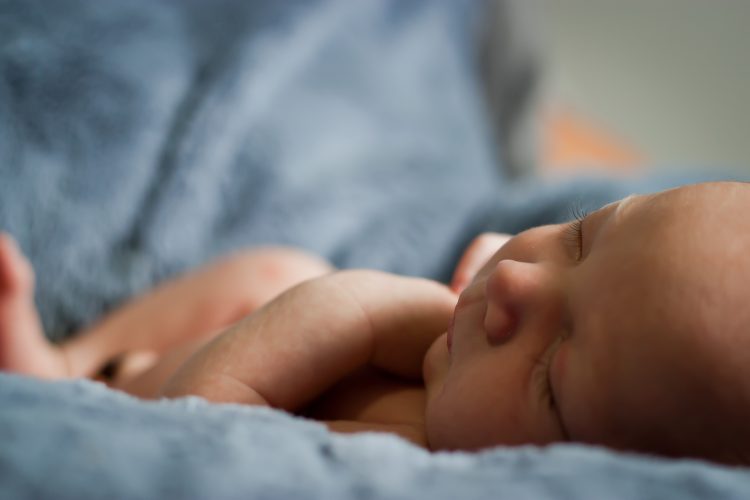Sleep devices are not a substitute for following SIDS recommendations.
Dr. Natasha Bergert, a Board-Certified Pediatrician, wrote this fabulous post on her blog, KC Kids Doc:
_____________________________________________________________________________________
You Bought an Owlet®? Great. SIDS rules still apply.
The market for infant sleep technology is booming. Nearly every week in my practice, a parent is introducing me to a cool new app or tech-savvy bassinet. New families are also using smartphone-enabled sleep devices with names like Owlet®, MonBaby, Mimo™, and Snuza®. These technologies detect motion or vital sign data while baby sleeps; at the ready to alert parents if their newborn’s behavior suggests a significant change from normal. Essentially, a SIDS-monitor.**
But, here’s the problem –> I am seeing an increasing number of new parents who are actively choosing not to follow well-known SIDS prevention guidelines because of these sleep monitoring devices. In fact, I been squarely told,
“We have an Owlet®, so it’s OK that he sleeps on his belly.”
NO. WRONG. NOPE. NOT EVER. NEGATIVE. INCORRECT. UNTRUE. FALSE. MISTAKEN.
Think of infant sleep tech like a floatation device. When your toddler is wearing floaties in the pool, “peace of mind” is offered when they are worn in addition to watching him play in the water carefully, within arms reach, while not distracted by a smartphone, while not intoxicated, and while wearing sunscreen of SPF30 or greater (wink, wink). Floaties would not offer the same security, however, if after putting them on; you pushed your child into the deep end of the pool, feel asleep on a deck chair, and counted on your smartphone to ping when he really got into trouble.
TO BE CLEAR, I HAVE NO PROBLEM WITH FAMILIES USING TECHNOLOGY AS AN ADDITIONAL SAFETY NET FOR THEIR NEW BABIES. BUT USING INFANT SLEEP MONITORS DOES NOT EXEMPT PARENTS FROM FOLLOWING THE SIDS-PREVENTION GUIDELINES THAT ARE SUPPORTED BY YEARS OF MEDICAL EVIDENCE.
Here’s what parents need to know about SIDS and infant sleep monitors.
SIDS is more than just suffocation. Companies are taking advantage of the fact that most parents don’t understand all the nuances and complexities of SIDS-related deaths. In short, SIDS-prevention is not just about avoiding suffocation, it is also about placing your child in a physical position that optimizes baby’s sleep physiology.
Evidenced-based infant sleep guidelines attempt to address critical areas of this physiology in order to reduce harm. Some examples:
- When babies sleep on their bellies, there is an increased risk baby will rebreathe exhaled gasses causing hypoxia andhypercapnia. Belly sleep also increases body temp, which is though to be an additional sleep stress.
- Research has supported that sleeping on the belly changes an infant’s innate neurologic ability to control the cardiovascular system, resulting in decreased cerebral oxygenation.
- Babies that sleep on their backs wake more easily. Although this perceived as a negative, frequent physiologic infant waking is thought to be protective against SIDS and should not be suppressed by belly sleep.
For these reasons and more, safe sleep is back to sleep. Any other sleep position is like pushing your toddler into the deep end of the pool. It’s a precarious position of increased and needless risk, no matter what additional safety devices are worn.
If home monitors reduced SIDS, babies would have gone home on this technology a long time ago. In the past, home monitoring devices have been tested. The data strongly suggested that monitors did not make babies SIDS-proof. Specifically, home monitoring did not provide any warning patterns that correlated with protection from death. Today, infant sleep technologies are simply sexy bluetooth-enabled versions of these decades-old machines. Does that make them more SIDS-savvy? Not enough to replace the sleep guidelines that we know are protective.
Technology fails. Wifi goes out. Batteries die. Alarm range changes. Falls off the diaper. Cat knocks the receiver off the nightstand. Baby rolls. Smartphone on vibrate. Hardware upgrades. App updates. Babysitter doesn’t know how to work it. Phone runs out of juice during the night. In the meantime, baby is in a sleep position of inherently increased danger. What happens then?
You can’t buy “peace of mind.” As important as sleep is for the entire family, the fact remains that once you are a parent, your heart is now connected to another person. Anxiety and worry for that other individual does not disappear with a reassuring price tag. Many of my families using this tech have simply moved from relentlessly “checking” the baby’s crib to being glued to the “baby live-stream” on their phone. In some cases, this ability of continuous connection has pushed families to a place of increased anxiety, leading to the $200+ device getting a nice place on eBay. Remember that safe sleep guidelines are created to keep parents as far away from the fear of SIDS as possible. Following them should provide pride and comfort in an optimal parenting choice.
Yes, that’s true. I would hope, however, that the device was a tool that alerted that family within the scope of otherwise good choices. That it was the icing on the cake of practicing evidence, and an add to smart parenting decisions. In that case, I’m so glad the baby is well.
I am hopeful that the continued work of infant sleep tech companies inspires new empirical research into the utility of home technology. Until then, use these devices wisely and with good judgement. Don’t ignore the medical evidence we have in exchange for misleading promises. Your baby’s safe sleep depends on your choices, no matter what trinket they may wear.
**Although Owlet® and others do not claim to prevent SIDS on its website or packaging, this implication of use is well-stated on many of the sponsored mommy blogs shared by these companies.
Rev 5/17
All material is from KCKidsDoc.com, written by Dr. Natasha Bergert.
See the original post here.

